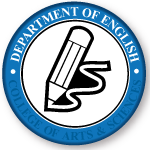Document Type
Article
Publication Date
2016
Publication Title
Routledge Companion to Comics
First Page
380
Last Page
389
Abstract
However we define comics, it is safe to claim that in general they consist of two main components: images and language. With some exceptions, the vast majority of comics include linguistic elements: speech balloons, thought balloons, narrative boxes, sound effects, and ambient language (language used in the background, as on store fronts, t-shirts, restaurant menus, and the like). Comics scholarship examines the language used in comics to say something about narrative, character development, even the nature of comics themselves. And while fitful linguistic analysis of comics began in the early 20th century, only recently has the academic discipline of linguistics been brought to bear on comics studies, resulting in a rapidly growing expanse of research. This essay will discuss the concept of “language of comics,” explore several approaches to language and linguistics, and then attempt to address linguistic scholarship as it intersects with the study of comics.
Recommended Citation
Bramlett, Frank. 2016. Comics & linguistics. In Frank Bramlett, Roy T. Cook, & Aaron Meskin (eds), Routledge companion to comics, 380-389. New York: Routledge.


Comments
This is an Accepted Manuscript of a book chapter published by Routledge/CRC Press in The Routledge Companion to Comics on July 26, 2016, available online: https://www.routledge.com/The-Routledge-Companion-to-Comics/Bramlett-Cook-Meskin/p/book/9780415729000?gclid=CjwKCAjw36DpBRAYEiwAmVVDMD1iXTjUKSQJiC1a_kdNgPiNxK8dvp7XIP5HUI5dWwPKEQ5VpW2gIRoCqzQQAvD_BwE or https://www.crcpress.com/The-Routledge-Companion-to-Comics/Bramlett-Cook-Meskin/p/book/9780415729000.